What Is Vegetable Fermentation?
Vegetable fermentation refers to a natural microbial process called lactic acid fermentation. During this process, beneficial bacteria, primarily Lactobacillus species, consume sugars in vegetables and produce lactic acid. This acid not only gives fermented vegetables their signature tang but also acts as a natural preservative, inhibiting the growth of harmful microbes.
All you have to do is combine vegetables with the right salt amount and submerge them in their brine. The microbes do the rest. In other words, you’re not fermenting, the microbes are. Your job is to create the ideal environment for them to thrive.
Which Types of Vegetables Are Fermentable?
Most water-dense vegetables can be fermented when prepared with the right salt concentration and fermentation time. While that might sound technical, it’s simpler than you’d think and incredibly rewarding.
If you’re just getting started, cabbage-based ferments like sauerkraut are a perfect entry point.
Cabbage naturally contains the proper moisture balance and beneficial microbes, making it a reliable and forgiving vegetable to wild ferment. Below, you’ll find flavorful twists on classic kraut recipes to kick off your fermentation journey.
Apple Sauerkraut with Celery and Black Pepper
Enjoy the unique flavors of this apple sauerkraut recipe made with celery and black pepper. This apple sauerkraut is long fermented for 21 days.
How to Make Old Fashioned Sauerkraut with Caraway Seeds
Enjoy this delicious Bavarian-style sauerkraut recipe made with caraway seeds. In this step-by-step recipe, you will learn to make old fashioned sauerkraut with caraway seeds in a mason jar.
Homemade Kimchi Inspired Spicy Sauerkraut Recipe
What does kimchi taste like? It’s spicy, umami, sour and absolutely delicious! Learn how to make kimchi sauerkraut, a spicy sauerkraut recipe with delicious kimchi flavor.
Turmeric Napa Cabbage Sauerkraut
If you ever wondered if you can make sauerkraut with napa cabbage, the answer is yes! This delicious turmeric sauerkraut recipe is a simple napa cabbage sauerkraut, perfect for preserving in-season fall and winter cabbage.
How to Make Sauerkraut in a Crock Customizable Master Recipe
Learn how to make sauerkraut in a crock with our comprehensive master recipe. This step-by-step guide teaches you to make sauerkraut in any size ceramic crock.
Other Vegetables You Can Ferment
Once you’ve gotten comfortable fermenting cabbage, you can confidently branch out to other vegetables. I always recommend starting with krauts and kimchi and then trying vegetables that are technically fruits, like cucumbers and peppers.
As you gain experience, you can begin experimenting with your own combinations and recipes. Just remember: creativity is welcome, but safety is essential. Certain vegetables require specific salt percentages and environmental conditions to ensure safe fermentation. Before you branch out too far, I recommend reviewing these two helpful guides:
The Perfect Lacto Fermentation Salt Ratio for Fermenting Vegetables
The Complete Guide to Salt Fermentation
Fermented Cucumbers: Fermenting Sliced Cucumbers Two Ways
This fermented cucumbers recipe makes it easy to ferment pickles that stay crunchy and crisp. Learn the best techniques for fermenting sliced cucumbers.
Fermented Honey Mustard Pickles with Shallots and Dill
Tart, crisp, sour and full of honey mustard flavor. Once you try these fermented honey mustard pickles you’ll need to start a second batch, because they wont last long! They’re perfect on hot dogs, hamburgers, sandwiches or for snacking on right out the jar.
Pepper Fermentation Recipe: Learn How to Ferment Any Type of Pepper
How do you make fermented peppers? What is the best salt ratio for fermenting peppers? how long to ferment peppers? With our Easy Pepper Fermentation Recipe you’ll have the best fermented peppers in just 5 weeks! Learn how to ferment peppers at home.
Why You Should Ferment Vegetables
Fermenting vegetables isn’t just about preservation, it’s about transformation. With salt, time, and beneficial microbes, you can turn fresh produce into probiotic-rich, flavor-packed foods that support gut health and digestion.
Fermented vegetables are loaded with live cultures, prebiotic fiber, vitamins, and minerals. Regularly incorporating them into your diet can improve immune function, reduce inflammation, and improve nutrient absorption.
While fermentation dates back thousands of years, it’s no longer just a folk practice. It’s a scientifically understood, time-tested method that makes your food more nutritious, flavorful, and shelf-stable.





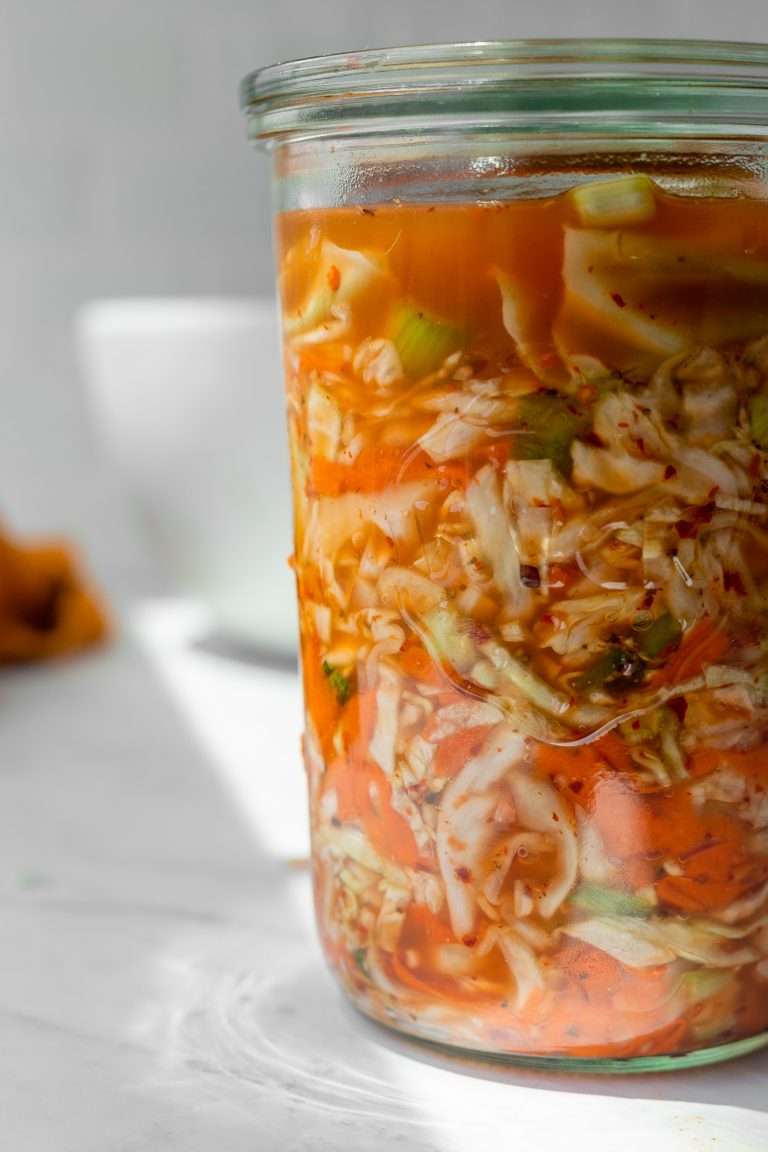
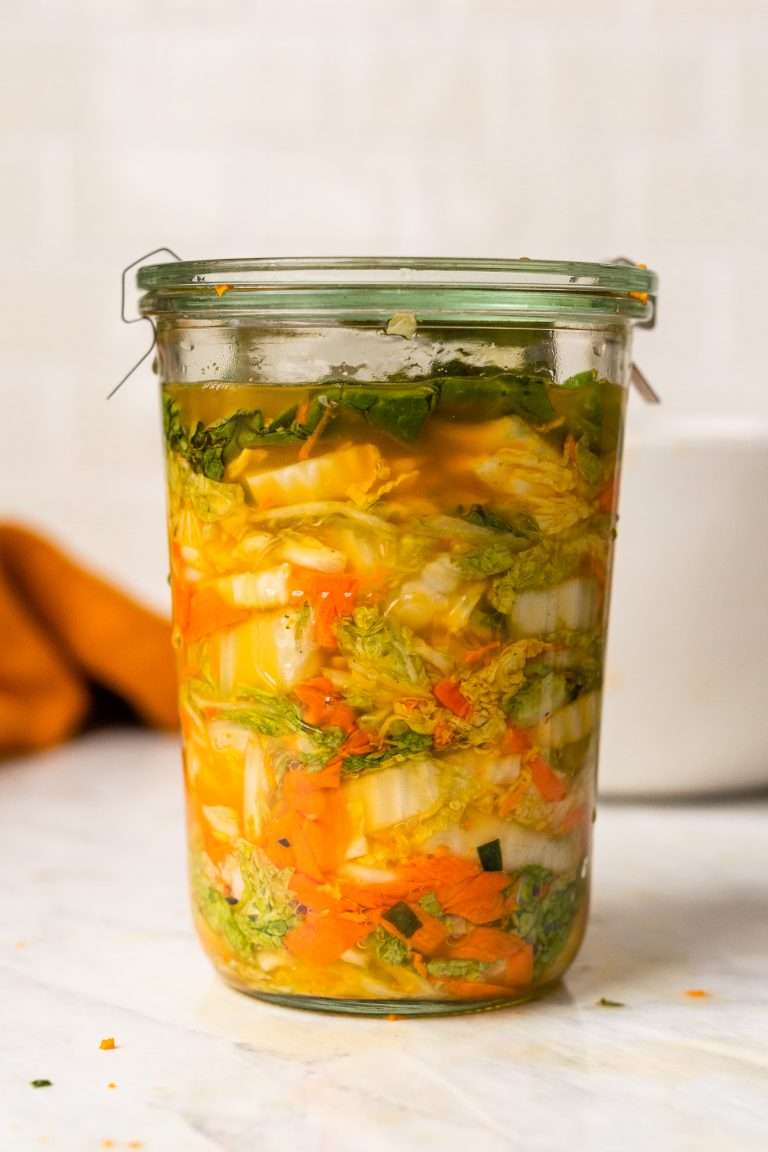
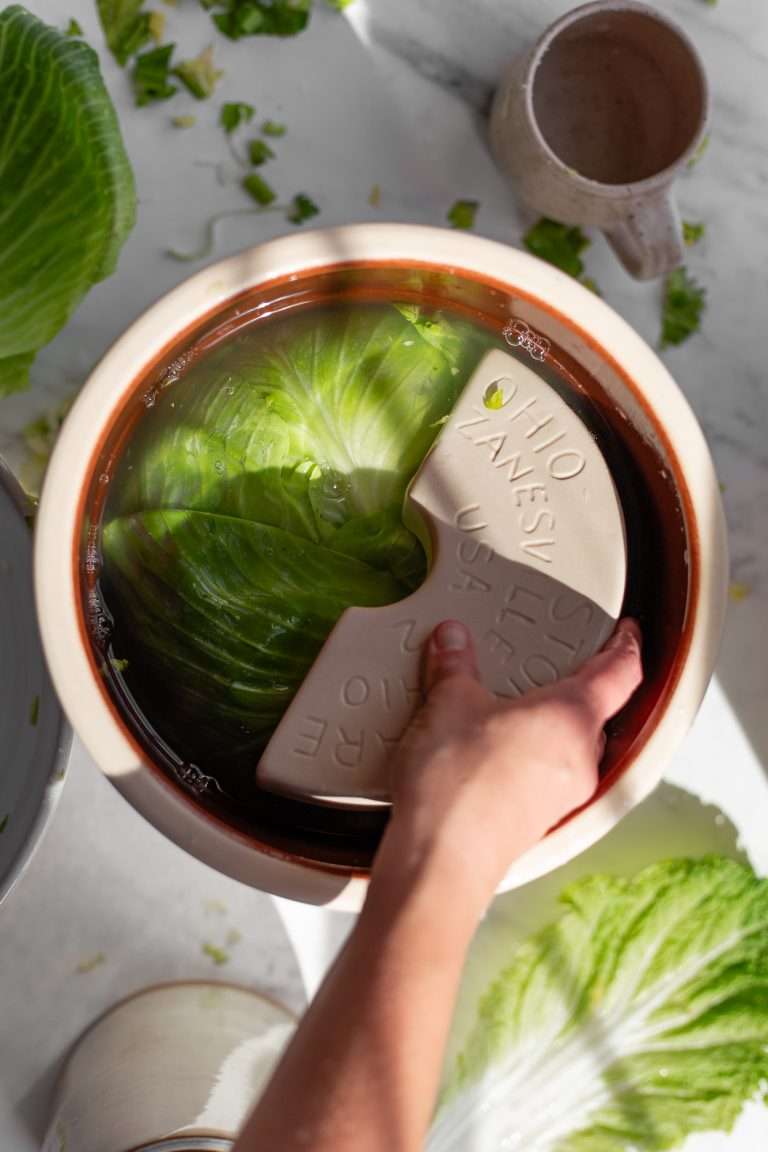

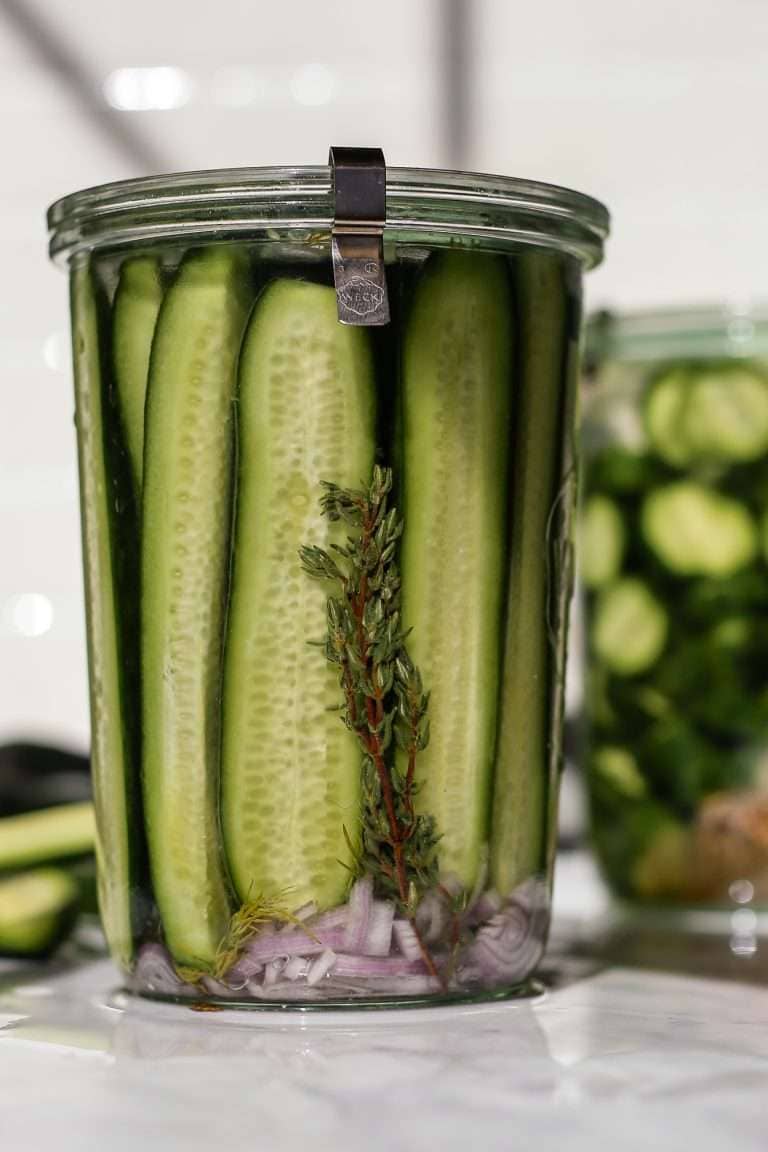
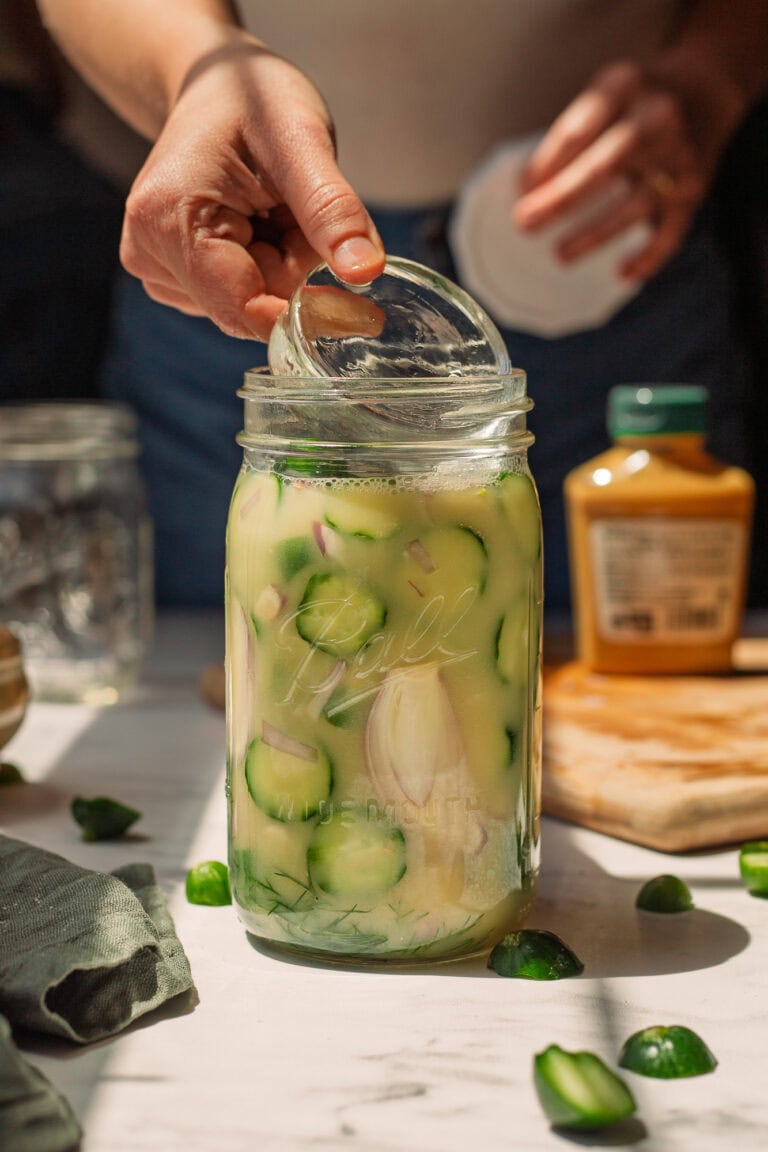
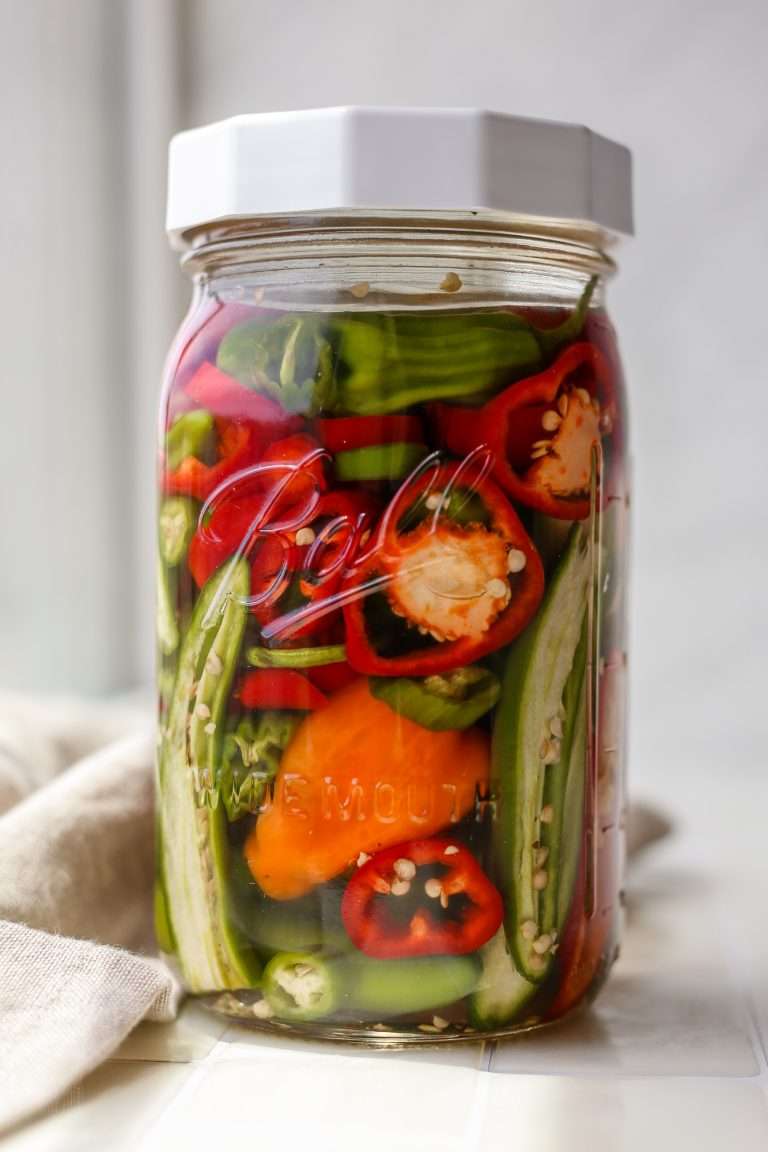

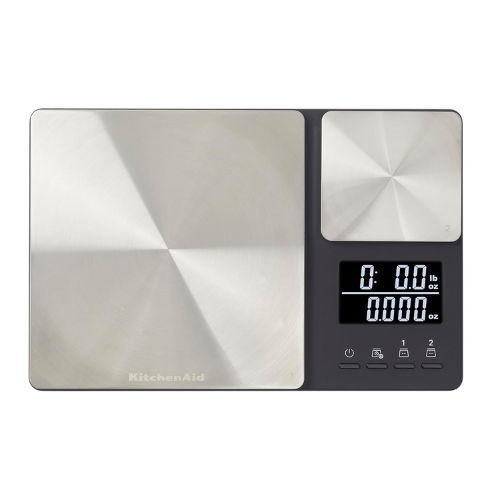

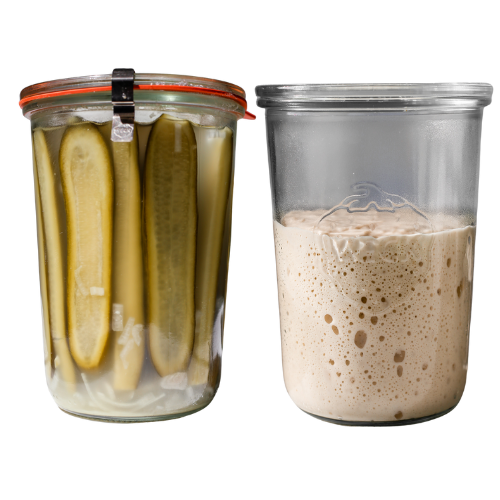
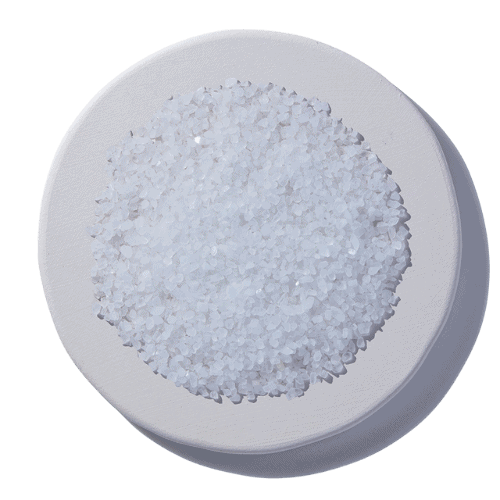


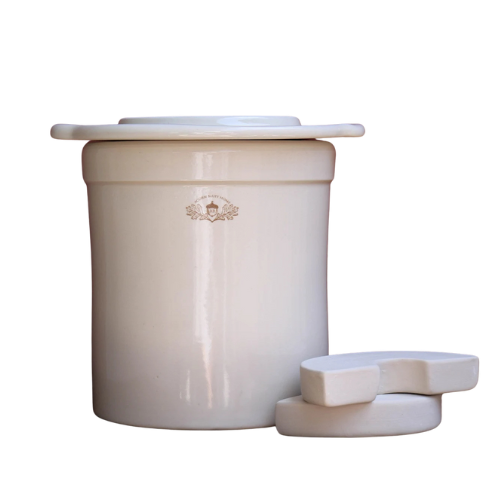
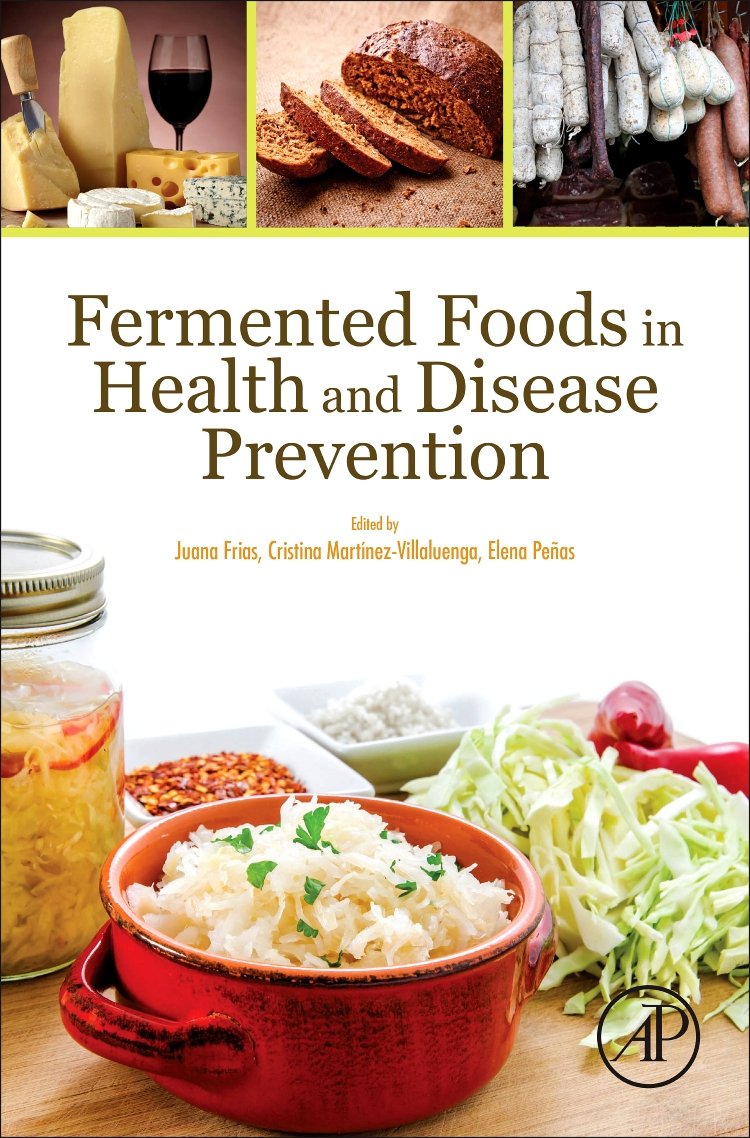
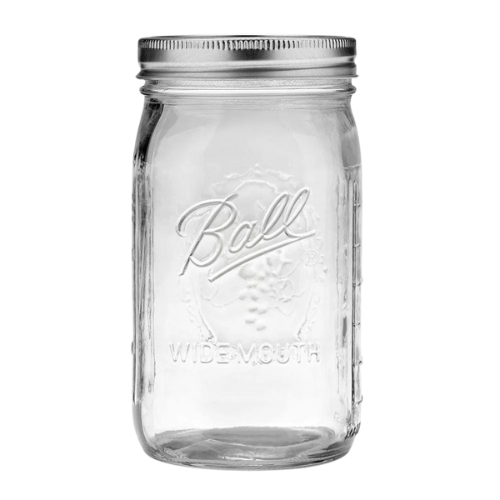














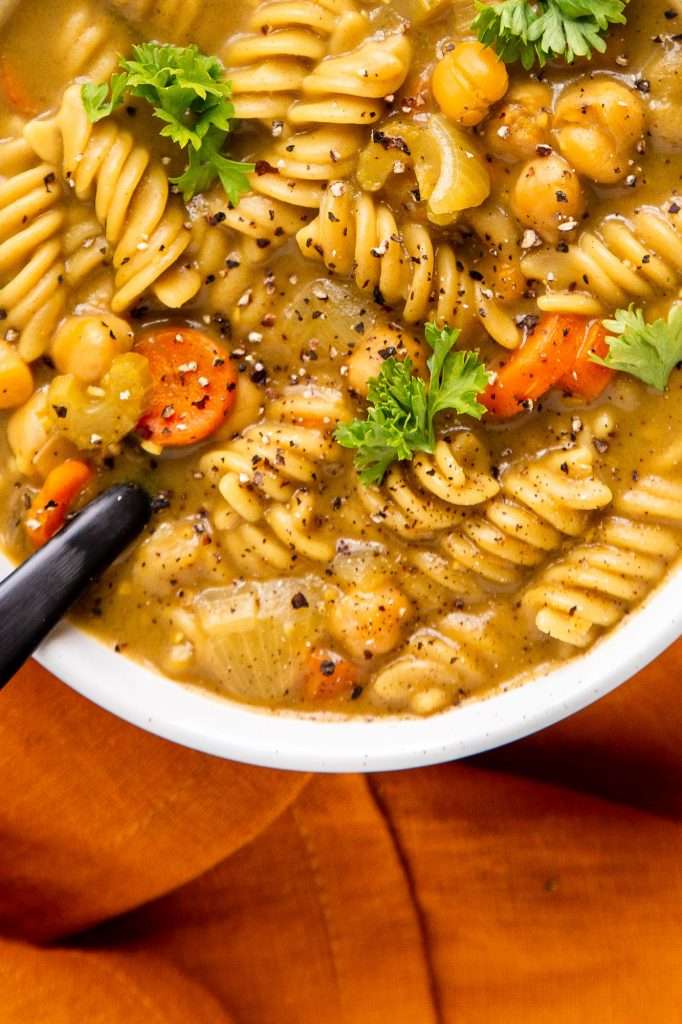

Hello! Thank you so much for this–it is reassuring to have more information on the science behind the fermentation process, which has always made me nervous! I am running into an issue, however: when assembling the ingredients for my jar of kimchi or kraut, it’s hard for me to know exactly how much water to use. I recently mixed up a batch of salt/water brine for my vegetables by estimating how much water I’d need, but it ended up being too much for the veggies + the jar. I had to up ultimately dump some out, which changed the ratio again. I actually had to dump some more out after the vegetables fermented for a couple of days, changing the ratio yet again. Any tips on how to approach adding the salt and water to the vegetables?